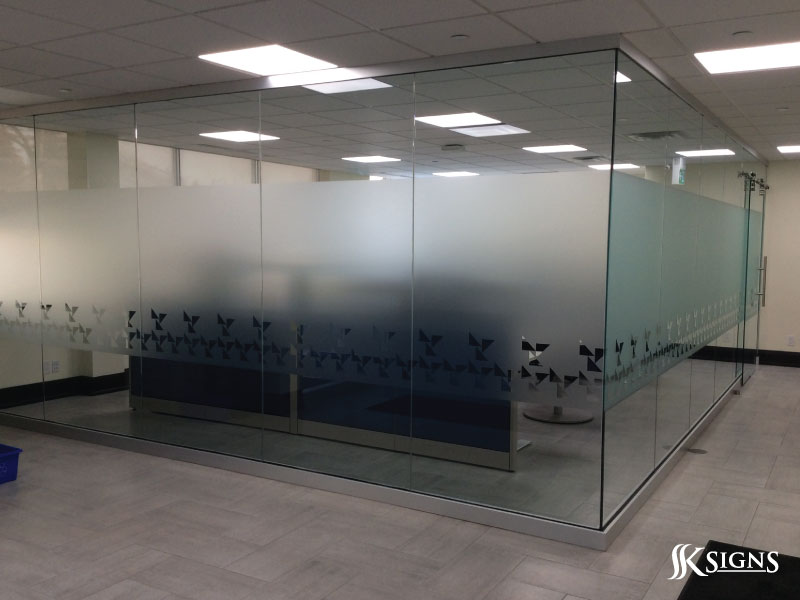Etched glass is a versatile and sophisticated art form that has captured the imaginations of artists, architects, and designers for centuries. From the subtle elegance of frosted patterns to the intricate detailing of custom designs, etched glass has found its way into homes, offices, and public spaces worldwide. Its beauty, practicality, and ability to transform ordinary glass into a canvas of artistic expression make it an enduring medium.
This article explores the history, techniques, applications, and contemporary significance of etched glass, showcasing why it remains a popular choice in both artistic and functional contexts.
A Brief History of Etched Glass
The origins of etched glass can be traced back to ancient civilizations, where artisans experimented with glass to create decorative patterns. The technique gained prominence in the 19th century during the Victorian era, when intricate designs became popular for home décor, particularly in mirrors, windows, and tableware. Artisans used tools to cut into the glass surface, creating detailed floral, geometric, and figurative motifs.
The invention of acid-etching in the mid-19th century revolutionized the craft. Acid-etching allowed for more precise and consistent designs, and it became a hallmark of high-end decorative glass. Companies like Lalique and Tiffany & Co. embraced etched glass, incorporating it into their luxury products. Over time, advancements in technology and tools have expanded the possibilities for etched glass, making it accessible to both artisans and industrial manufacturers.
Techniques of Etched Glass
Etching glass involves altering the surface of the glass to create a design. This can be done through a variety of methods, each offering distinct advantages and aesthetic effects:
- Acid Etching
Acid etching involves the use of chemicals, typically hydrofluoric acid, to erode the glass surface and create a frosted appearance. The process begins with a design that is either stenciled or painted onto the glass using a protective resist material. Once the design is in place, the acid is applied, selectively etching the exposed areas. Acid etching produces smooth, uniform designs and is widely used in mass production. - Sandblasting
Sandblasting is a more modern and versatile technique. It uses high-pressure streams of abrasive materials, such as aluminum oxide or silicon carbide, to carve designs into the glass. The depth of the etch can be controlled, allowing for both light frosting and deep engraving. Sandblasting is popular for creating intricate and layered designs, and it is commonly used in custom projects like signage and decorative panels. - Laser Etching
Laser technology offers precision unmatched by traditional methods. Laser etching involves directing a laser beam at the glass surface, vaporizing material to create intricate patterns. This technique is particularly effective for detailed artwork, text, and logos, and it is commonly used in industrial and commercial applications. - Hand Etching
For those who value traditional craftsmanship, hand etching remains an option. This labor-intensive process involves manually engraving the glass using diamond-tipped tools or rotary equipment. While it requires exceptional skill, hand etching produces one-of-a-kind designs with a personal touch.
Applications of Etched Glass
Etched glass is celebrated for its versatility and ability to enhance various spaces and objects. Its applications are as diverse as its techniques, spanning both functional and decorative purposes.
Architectural Uses
In architecture, etched glass is a favorite for adding elegance and privacy without sacrificing natural light. It is commonly used in:
- Windows and Doors: Frosted or patterned glass adds an element of sophistication while obscuring visibility, making it ideal for bathrooms, offices, and entryways.
- Room Dividers: Etched glass partitions offer a stylish way to separate spaces in open-concept designs.
- Skylights: Etched patterns on skylights diffuse sunlight, creating a softer and more even illumination.
- Balustrades: Decorative etching on glass railings adds a touch of artistry to staircases and balconies.
Decorative Applications
Etched glass is also widely used for decorative purposes:
- Mirrors: Intricate etching enhances the aesthetic appeal of mirrors, turning them into statement pieces.
- Art Panels: Custom glass panels with etched designs serve as focal points in interior spaces.
- Glassware: From wine glasses to vases, etched designs elevate ordinary glass items to works of art.
Corporate and Commercial Use
In commercial settings, etched glass is often used for branding and signage. Logos, slogans, and patterns etched onto glass doors or panels create a professional and polished appearance. Hotels, restaurants, and retail stores frequently use etched glass to enhance their ambiance and reinforce their brand identity.
The Contemporary Appeal of Etched Glass
In today’s design landscape, etched glass remains a sought-after material due to its ability to blend form and function. It aligns with modern preferences for minimalist yet impactful design elements. Moreover, advancements in technology have made custom etched glass more accessible, allowing for personalized designs that cater to individual tastes.
Sustainability is another factor contributing to the popularity of etched glass. Glass is a recyclable material, and many artisans and manufacturers are adopting eco-friendly practices in their etching processes. Additionally, etched glass can contribute to energy efficiency by diffusing light and reducing glare, making it a practical choice for green building designs.
Caring for Etched Glass
Maintaining the beauty of etched glass requires proper care. Because the etched surface is more porous than regular glass, it is prone to collecting dirt and fingerprints. Regular cleaning with non-abrasive cleaners and soft cloths helps preserve its clarity and texture. Avoiding harsh chemicals and abrasive tools is essential to prevent damage.
Conclusion
Etched glass is a timeless medium that continues to inspire creativity and innovation. Its unique ability to combine artistry with practicality ensures its place in both traditional and contemporary designs. Whether used for decorative accents, architectural features, or functional objects, etched glass brings a sense of elegance and individuality to any setting. As techniques evolve and new possibilities emerge, etched glass will undoubtedly remain a cherished art form for generations to come.
